#of gay clubs in the 1970s
Explore tagged Tumblr posts
Text
realizing i could honestly teach a whole course on mouth congress and probably fill an entire class with an analysis of "young and alive in 1975" and "thanks for the disco"
#source: we're currently talking about the rise and fall of disco in my music history course#and i'm like noticing things that are references in the songs' lyrics/composition that i had no idea were there#but also even in general those two songs are so fascinating paired together#like you have young and alive in 1975 whose whole idea is nostalgia and looking back on the unapologetic party atmosphere#of gay clubs in the 1970s#and ending on the note of ''it's not too late we can still keep these feelings alive''#and then you have thanks for the disco where it's a very in-the-moment song. and still about disco and partying but darker in tone#where it's like ''yes these gay clubs still feel like family yes i'm still having fun but everything has to be in the shadow of AIDS''#like it captures that party-atmosphere-queer-anxiety so well#and then all these years later. mouth congress is back together in 2022#and what do they choose to open the majority of their shows with? young and alive in 1975#saying hey. the old days were great but we can still bring that type of vibe into the modern day and be thankful for surviving it all#it's so goddamn powerful#and i could also go on and on about how so often disco and punk are framed as opposites#but that's a very heterosexual point of view bc both were very important to the queer community#and mouth congress manages to blend both in almost all their songs#no i will never shut up about mouth congress why would you ever think that
5 notes
·
View notes
Text
i would cruise astarion in the 70s in an abandoned warehouse on a pier tbh
i would conquer my own shyness by sheer force of manliking
#kore txt#god nerfed me by making me a transfag in the 2010s rather than a cis gay in peak 1970s cruising and club culture in san francisco#also its great this man aint real there are enough white men on this planet making me Say Things
4 notes
·
View notes
Text



New York City’s last by-the-hour love motel has closed. If these walls could talk...
They would probably share how this narrow building opened in 1908 as the Strand Hotel. Or how in 1912, due to its close proximity to the pier, The New York Times rented out every room to cover the Titanic sinking. Or how in the 1940s, it catered exclusively to men and rented to sailors who usually had only a few hours to experience what the city had to offer. Or how in the 1970s, it changed its name to the Hideaway Motel and opened a gay club in the basement called The Anvil. Or how celebrities like Andy Warhol, Truman Capote, Freddie Mercury and Lou Reed frequented the club until its closure in 1985. Or how when it changed its name to the Liberty Inn, its themed rooms were the site of many affairs through the next three decades.
Or how the motel property was acquired by Hyundai and for the first time in over 100 years, has permanently closed.
The future of the former Liberty Inn is unknown, though I received a message recently from someone stating that it has already been demolished. I wasn’t able to confirm this and in May 2024 (via Google Street View), it was still standing. Per the New York Post, the 6,735 square-foot building can be replaced with one twice as large under zoning rules and because it lies outside the nearby historic district, new construction doesn’t need to be approved by the Landmarks Preservation Commission.
392 notes
·
View notes
Text
Why does Harlan Ellison always look like he’s just came out of a hotbox inside a 1970’s gay club

173 notes
·
View notes
Note
bro was literally "grieving" for like 16 years and abused her child and every other student in his damn class
you're fuckin mental
Anon, we're all adults here, no need to hide.
And yet we don't talk about how other professors did to children, I don't see you talking about Minerva doing more horrible things to Neville hmmm....
Point: It's normal in the Wizarding World to torment children, we don't comment on stuff like:
— Minerva leaving Neville out of the common room when there's a mass murderer outside.
— Minerva trying to humiliate Neville that he will never transfigure a teapot.
— Hagrid disfiguring and making fun of a kid's appearance.
— Pince hexing Ginny and Harry's things.
— And Mr. Stutter.
Minerva has favourites just like Severus and it's actually worse.
— Bending the 'First Years Aren't Allowed Having Their Own Broomsticks' rule for Harry.
— Sending Harry and the trio to Hagrid (Oh she knew OP, if Neville did that, Neville would serve detention with her.)
"Why are you bending this thing to Minerva?"
Because you are making excuses to hate on Severus, and never care about the fucked up shit that Minerva did (Because you're a fucked up shit too.)
And why not blame Dumbledore for hiring shitty staff lmao? This is completely normal for them and I'm not happy about it but I'm living.
And Neville was a sensitive child, Remus's fear isn't the literal moon, so is Ron having his boggart as a literal spider, Parvati having a mummy, and Seamus with a banshee. Neville can't have fears from Barty or Bellatrix because he never received them himself. Yet I don't see you commenting on them, hmmmm?
Yes, he was grieving for several years because his life is so fucked up no one loved him but her. And Lily was a horrible friend who laughed at him while he was being SA'd and defended his tormentors.
"He didn't wear trousers." It's literal culture in the Wizarding World not to wear trousers, James knew what he was doing and he wasn't probably even wearing trousers either.
Grieving is completely normal, it's like losing your sister who loved and took care of you, and I don't see you commenting on Sirius grieving James for twelve years and would've grieved more if he was alive.
Lastly, he's a fictional arse character ☠️ I can like anyone just like how Mstans can like the Marauders. :P
I feel so bad for the innocent Mstans who has done nothing wrong to be included into your mental help club of 1970s gay wizards.
Sure he bullied kids, but compared to other professors who never been abused and act the complete same as him? He's better ngl.
And the grieving one? Have you never grieved or are you emotionless? ☠️
#severus snape#marauders era#pro severus snape#pro snape#harry potter#snape#golden trio era#anti marauders#anti marauders fandom
93 notes
·
View notes
Text
It's National Coming Out Day, and did you know that coming out used to have a different meaning before World War Two?
Gay, or rather camp culture of the early 20th century drew a lot of inspiration from the high society culture. Fairies used titles like Duchess or Lady (you can read more about them here), drag balls and masquerades attracted hundreds of people, queer and straight, and there were even theatre and knitting clubs for fairies. And the tradition of introducing debutantes into the society took a form of coming out into the gay world. In general, it could mean joining the large, vibrant gay society of American cities, but in particular it referred to huge drag balls at which newcomers were introduced.
Like many elements of the pre-war queer culture, these balls became especially popular in the early 1930s, the so called pansy craze. There is a great collection of articles about them from the Baltimore Afro-American.
Until the 1960s, there was no such thing as a closet. Gay, lesbian, trans people just did not think that they lived in some prison: on the contrary, the world they knew was expansive. Living in these two very different worlds was more like a stage performance. Quoting George Chauncey's Gay New York,
“Gay people in the prewar years, then, did not speak of coming out of what we call the "gay closet" but rather of coming out into what they called "homosexual society" or the "gay world," a world neither so small, nor so isolated, nor, often, so hidden as "closet" implies” (p. 7).
As for the term coming out, it changed its meaning over time. At some point it was used to refer to the person's acceptance of their sexuality. Then it came to mean a person's first relationship. Only by the 1970s coming out became the practice of revealing one's sexuality to straight people.
#gay history#queer history#coming out#gay#gay culture#queer community#1930s#trans history#blog: history
365 notes
·
View notes
Text
Only Friends, Boston, and Queer Culture
I wanted to talk a little bit about an observation that I made about Boston and how he acquires sex partners (i.e. who he picks up, how he picks them up, where he picks them up, and where he chooses to have sex). Now, again, we are only two episodes in so I will not presume to make a pattern of anything quite yet, and I am looking forward to seeing how my current observations shift in light of any new information coming out of future episodes. But, it was notable to me that the only times Boston has been seen actively pursuing a second sexual encounter with someone is either in public spaces or after he has had sex with them in public.
Because Boston is very sexual, we actually have a lot of data points on him already, (and will likely get many more, seeing as Boston has been in 5 out of 7 of the heavy makeout/sex scenes in the show so far). What we have seen so far is a one night stand with Drake’s character after Boston is picked up at a bar and brought back to unnamed-Drake-character’s apartment; Boston returning for a second and third sexual encounter with Nick after he and Nick fuck for the first time in the cellphone repair shop; and Boston openly flirting with and trying to tempt Top in to sex in exclusively public spaces.
Cruising
What is Cruising and Why is it Important?

Photograph by Steven Barker
I realize that there are many people here who may be unfamiliar with the term/concept of ‘cruising’. As a self-defined “baby gay” there are many terms that came out of the past decades’ queer culture that I was and am personally unfamiliar with. As such, I wanted to make sure everyone was on the same page with the terminology. “Cruising” is a code-word/gay slang that refers to an individual or individuals ‘walking or driving around a locality, called a cruising ground, in search of a sex partner, usually of the anonymous, casual, one time variety’ (Wikipedia).
In her essay Respectable promiscuity: Digital cruising in an era of queer liberalism, Jody Ahlm (then PhD candidate, now Dr.) states the following: “Cruising traditionally occurs in bars, clubs, or public spaces such as parks and public restrooms where men generally signal sexual interest in another man through established non-verbal signals (Be ́rube ́, 1996; Delany, 1999; Humphreys and Rainwater, 1975; Tewksbury, 2002).”
For the sake of simplicity, cruising is a term applied to the action of (usually, but not exclusively) gay men seeking out casual sex in public spaces.
Cruising is and was an important aspect of queer culture, for a number of different reasons. “Tearooms” or private public spaces that were adapted to accommodate gay sex (public bathrooms, for example). While a benefit of tearooms was instantaneous sex, a much more important and notable aspect of tearooms was who in the queer community was frequenting these cruising locations
Of the bar crowd in gay (homosexual) society, only a small percentage would be found in park restrooms. But this more overt, gay bar clientele constitutes a minor part of those in any American city who follow a predominantly homosexual pattern. The so-called closet queens and other types of covert deviants make up the vast majority of those who engage in homosexual acts- and these are the persons most attracted to tearoom encounters…It may be more surprising for the outside to discover that most of these [tearoom participants] are married. Indeed, 54 percent of my research subjects are married and living with their wives. (Tearoom Trade, Laud Humphreys, 1970)
In short, cruising and cruising locations are important to ensuring that men who have sex with men (MSM) who are closeted, married, or do not frequent bars, have an opportunity to engage in sex with other men. (Tradition of sex cruising at Aquatic Park to end. John Geluardi, 2001)
How Cruising has Changed Over Time

Overall, cruising is a lot less popular now than it was in the 1960s and 1980s, in part due to the AIDs epidemic and concerns of HIV transmission (Ahlm, 2017). Ahlm’s essay argues that the AIDS epidemic “initiated a trend toward monogamy among gay men” and that apps like Grindr have shifted the landscape of sexual interest and politics towards a “contested cultural space where publicness and privateness co-exist, creating tensions for self-presentation that are structured by contemporary sexual politics.”
Sociologists have identified a shifting in cruising culture from public, in-person spaces to private, online spaces. In her research, Ahlm noted that none of her subjects who used Grinder reported engaging in public or semi-public sex or being asked to engage in public or semi-public sex by another person. So we are seeing the landscape of where and how gay men engage in sex shift ever increasingly towards private spaces. We can ask ourselves why that may be:
Dalton (black/mixed,5 28) says,”People like to maintain a certain image of themselves, and everybody wants to appear chaste but desirable at the same time, and whatever. People will say ‘‘Oh you’re going on there and you’re trying to do that [find sex], I just talk to people and I never do anything.’’ I’m like ‘‘Sure, right’’ [sarcastic tone].” The multiplicity of intentions on Grindr allows for plausible denial of promiscuity, while the app’s reputation requires constant management of the stigma in order for that denial to be plausible. Like the majority of users, Dalton’s profile says he is on the app for ‘‘Friends, Chat, Networking.’’ However, sexual interaction is the goal of his in-person meetings, and he only chats with people he finds attractive and would potentially like to have sex with. This contradiction between stated intentions and actual use is not unique to Dalton’s Grindr use, it is the rule rather than the exception (Ahlm, 2017)
While privacy can be a valued aspect of people’s personal life experiences, shifting cruising culture to major online spaces designed specifically for gay people, and having sex with people who connect across mobile apps, is contributing to respectability politics:
Shifting cruising to private spaces—both actual sex acts and the practices associated with finding a sexual partner in a public space, furthers the sanitation of gay physical spaces. Users can meet sexual partners without ever leaving home, and public gay spaces become sites for platonic socializing. Gay men go to the bars with their friends to hang out, not to cruise…The performance of cruising is desexualized by the plausible deniability of using a phone app and the plausible deniability of Grindr itself, as discussed earlier. It is not just public sex that is disappearing, so too is the public pursuit of sex. This is not to say that gay bars have been completely desexualized…However, as Orne (2016) shows in his ethnography of Chicago’s Boystown, they are the cultural markers that make the neighborhood a popular place for bachelorette parties ‘‘on safari’’. They are not the same as a visible collective practice of searching for and choosing a sexual partner for the night, regardless of where the sex occurs later. (Ahlm, 2017)
TL;DR: The act of looking for sex partners and engaging in public or semi-public sex as a result (“cruising”) has been steadily phasing out as a practice in gay culture, heading towards more private sexual encounters with sex partners who meet on mobile apps, ultimately resulting in a sanitized image and partial desexualization of gay spaces/bars.
Boston’s Cruising Habits
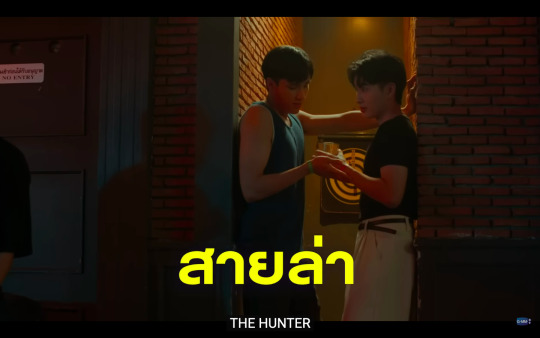
When I was reading that Ahlm piece, I could not help but think about our very first introduction to the characters of Only Friends in Episode 1. The show opens at a gay bar, we go around listening to Mew’s descriptions of what archetypes his friends fit in to, at which point we learn that everyone in attendance at the bar that particular evening are wearing wristbands indicating their availability to be hit on. Which is making me feel like Jojo and co. (Ninew, Den, the rest of the writing crew) are placing their characters in a past gay culture, giving them an opportunity to return to roots of public cruising. Not every character will engage in such activities, but we know for a fact that Boston and Top are cruising in some capacity from the outset of the show (Boston trying to talk his way into a threesome with Bar Stranger #1, Boston getting picked up by Bar Stranger #2 [aka unnamed-Drake-character], Top striking up conversation with Mew after Mew bumps into him), and with the direct references Jojo and co. are making to Queer As Folk (UK) (1999) if the goal of Only Friends is to highlight queer culture, I would not be surprised.
While we are only two episodes in at the time I am writing this, it was intriguing to me that Boston appears to be one of the few characters engaging in more traditional cruising culture. It is clear that most of the main characters frequent Yo’s bar, though it appears the friend group uses the space more as a place to hang out with one another, rather than a space to cruise. All except for “The Hunter”, Boston, who is seen constantly attempting to pick up, or being picked up by other queer men in a bar setting. We know that Top also frequents the bar, and we have not as of yet seen him with any other friends, so we can presume that Top spends his time at Yo’s bar cruising as well (based on the fact that he has slept with Boston and he did hit on Mew at the bar, but we don’t have any definitive evidence of that yet because we don’t know how Top and Boston met, and Top has only actively been pursuing Mew thus far).
A trend I saw in the first two episodes when it comes to Boston that I find particularly noteworthy (aka, is a trend I want to track as the show progresses to see if that trend continues), is that Boston is only ever repeating sex with people who engaged in public sex with him in the first place. From flashbacks we see Top and Boston making out in a photobooth, an implication there that Top and Boston then fucked in the photobooth since “once was enough” for Top and Boston. The first time that Boston and Nick fuck, they do so in the aisle of the cellphone repair shop. Nick may turn off the lights, but that does not negate the fact that there is a chance that Boston and Nick may be walked in on and caught by an unassuming customer. When Boston hits on Top, it is in a public space: the bathrooms of Yo’s bar, when Boston attempts to initiate a second sexual encounter with Top, it again is in a public space: the locker room/showers at the wakeboarding place.
Public Sex, Photography, and Brewing Thoughts about Boston
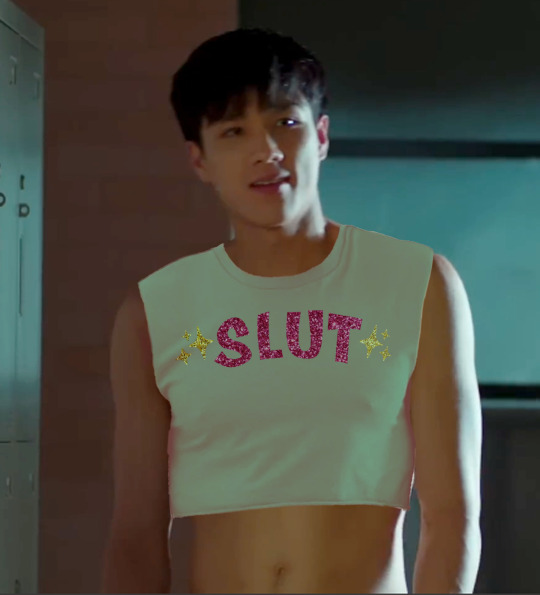
Image by @nongnaopat
While I was reading up on cruising, I came across a couple articles with quotes and observations that immediately made me think of Boston, and a question started brewing in my mind:
Is Boston a physical manifestation of the queer hookup cultures 60s-80s?
Boston’s Personality v. Public Sex
Again, we have only seen two episodes of Only Friends so I am not yet secure in my own interpretations of Boston. However, I was thinking about the conversations that occurred the other day about how Boston must exert control over others (@respectthepetty), and how he is ready and willing to meddle in Mew’s life by trying to seduce Top, but that there is noticeable fear and slight panic at the thought that Mew might catch him and Top together in the shower (@stuffnonsenseandotherthings).
There was something that just spoke to me so strongly about Boston’s character archetypes in relation to the conversations brought up in Chapter 6: Tearoom Trade: Tales of Public Sex of the book Marginal People in Deviant Places: Ethnography, Difference, and the Challenge to Scientific Racism by Janice M. Irvine.
In this chapter, Irvine discusses the essay Tearoom Trade: Impersonal Sex in Public Spaces written by Laud Humphreys. Within this chapter, Irvine states “Humphreys argued that tearoom participants varied in vulnerability to risk of exposure. He noted that married men and men who did not have career autonomy were highly vulnerable to negative consequences if discovered in the tearooms.” (Note: my understanding of “tearooms” from this reading is that they are public restrooms that have been transformed to better support instant sex, i.e. a broken window for a lookout, glory holes, walls removed between stalls, etc.) While an assumption could be made that vulnerable men would not engage in public sex, that assumption does not carry through to reality. Humphreys further claims that highly vulnerable men did still engage in public sex via tearoom visits, but they employed protective strategies to mitigate any suspicion of their queerness, often a hypermoral one.
I know “hypermoral” is not a term that anyone who has observed Boston for more than twenty seconds would really attribute to his character, but what did speak to me is what Humphreys says about the strategies employed by the highly vulnerable:
The secret offender may well believe he is more righteous than the next man—hence his shock and outrage, his disbelieving indignation, when he is discovered and discredited…Subjected to harsh social condemnation and legal penalties, the tearoom participant was likely to turn his anger and hatred on himself or others in his group. “Worse yet,” Humphreys argued, “he may justify himself by degrading others, displacing his hostility onto outgroups in the manner of the authoritarian personality.” (Irvine, 2022)
Now which Only Friend character are we thinking of based on the quote above?
“Hence his shock…when he is discovered…”
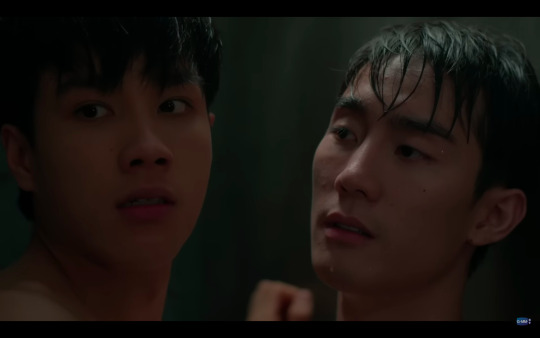
“The tearoom participant was likely to turn his anger and hatred on himself or others in his group”


“He may justify himself by degrading others”
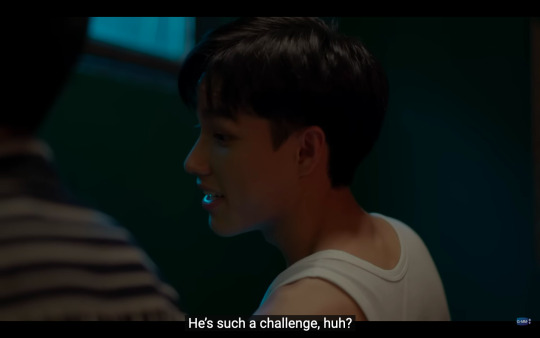
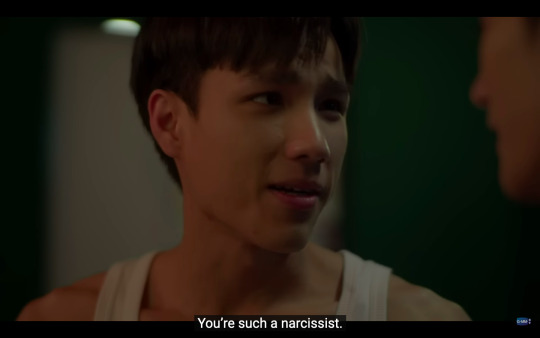


One thing we do know about Boston is that he currently does not have career autonomy. He wants to be a photographer, but he is studying business because he may have to take over his father’s company (YouTube: Only Friends, Episode 2, Part 2/4, timestamp: 2:27). How much that pressure is really on him and how highly vulnerable Boston may be if caught engaging in gay, public sex remains to be seen, but to me it is worth noting. A research question to be asked: Why does Boston act the way he does? Is he vulnerable in some way and trying to compensate for it, or is just genuinely an asshole? Not sure, but I look forward to finding out.
An additional similarity that immediately came to mind in my readings and their relation to Boston was a reference to Rechy and his writings about male hustlers:
Rechy wrote about how male hustlers selling sex navigated the toilets. He cited the norms of the sexual marketplace with sociological precision: “Stand at the urinal long after youre [sic] through pissing. At the slightest indication of interest from someone in one of the cubicles, go up to him quickly before he gets any free ideas and say: ‘I’ll make it with you for twenty.’ (Irvine, 2022)
Boston is not a sex worker, he is not asking to be paid for his time, but the way he approaches Top in the bar bathroom to try to prompt a second sexual encounter does allude to the hustler culture. Top is standing at the urinal when Boston approaches
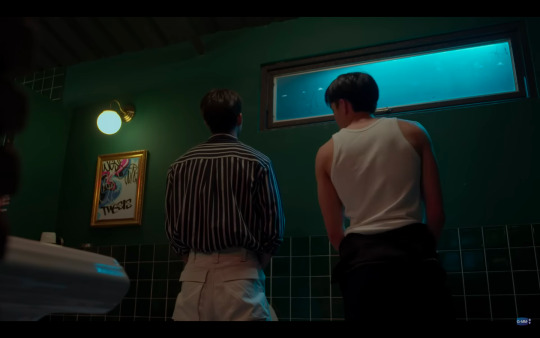
He strikes up conversation with Top who only really seems to be partially engaged, Top walks away from the urinal to wash his hands, Boston follows, placing his hands around Top’s, trying to proposition sex, appealing to their supposedly similar approaches to sex.

This is not a direct comparison to be sure, but I just wanted to mention it because it felt similar enough to be a reference. This reminded me too of the nod Jojo and Ninew had to gay male sexual culture in The Warp Effect when Alex has his shoulders massaged by a random patron propositioning sex at Jedi’s bar while he is standing at the urinals. Or to the more direct reference to cruising that Jojo and Aof put in to the character of Arm in Gay OK Bangkok, or Army in The Warp Effect (two pieces which I will continue to say are required viewings before [or at this point in conjunction with] Only Friends).
Boston’s Interest in Photography v. Public Sex Debates
Another aspect of Boston’s character that feels relevant to previous queer culture is his interest in photography itself, because photography has its own ties to tearooms and public sex.
In 1964, The Florida Legislative Investigative Committee “published a pamphlet that featured an explicit photograph of a man engaged in a sex act in a public restroom. The report, dubbed “the purple pamphlet,” was intended to shock readers and mobilize antigay repression.” (Irvine, 2022).
As a warning I am about to cite a pretty big chunk of text, but it is important information:
Photography became one of several technologies police and moral entrepreneurs used to observe and produce evidence of sexual deviance. Yet photographic surveillance could also be subverted. After the tearoom photograph was published in the 1964 Homosexuality and Citizenship brochure, conservatives attacked it as pornographic. The committee quickly removed it from the report, but the photograph was reprinted and vigorously marketed by Guild Press, a publisher of homoerotic materials. Gay pulp publishing was growing by 1964, and Guild Press, established in 1962, was no doubt gleeful to find and market this photograph. The Guild advertisement pointed out that this was the only “action photo” of a glory hole scene that had ever been in print, and as historian Thomas Waugh noted, “the glory hole photo became famous.”23 The “purple pamphlet” and its widespread dissemination was an early case of how social and religious conservatives played a significant role in making visible the sexual representation that they condemned. (Irvine, 2022)

Thinking about Boston and his interest in photography, we can notice another potential link to queer culture. Going in to Boston’s darkroom, we see a number of photographs on his wall of hot men in various stages of undress. With the preceding scene of Boston taking a photo of Nick after they fuck establishing some context, we can make some quick assumptions about who those men are to Boston and what was occurring prior to the photo being taken.
Even within two episodes of Only Friends the camera has almost served as an additional character, bringing us in to the private-public spaces we aren’t supposed to witness. In a conversation I was having with @waitmyturtles, she made the absolutely brilliant point: “the camera of the show is messing around with what we perceive as privacy”.
Sure Boston is making sexual advances on Top in the showers of a public locker room, but no one is supposed to know that, at least no one who could be actually, emotionally impacted by catching Top and Boston together. We see it, but we aren’t supposed to.
But I want to move beyond the show’s actual camera to briefly touch upon the other cameras we have seen alluded to on screen so far. Kudos to whoever it was on tumblr that took the screen shots of the hook up between Neo and Drake and pointed out the web camera that was sitting at the top of the computer monitor. Now, we have absolutely no idea if that is relevant at all to future plot lines, if the web cam was on, or if any part of that sexual encounter will come back to haunt Boston. But I think it is worth mentioning the very real and easy possibility that the web cam could have been recording the room (whether it actually was or not). In this way, Boston is playing with fire around what aspects of himself and his sexuality are captured on a screen.
When Boston and Nick hook up for the first time in the cellphone repair shop, Boston stops the make out session long enough to look around. No, not around, up. Up to the ceilings as if he is scanning the room for possible cameras. Again, we don’t know for sure if a) there are cameras there, b) if that is relevant at all to future plot lines or c) if that really was what Boston was doing. But either way, Nick catches on to Boston’s scanning of the room, and turns off the light so that they can’t be seen.
In both of these cases, whether the cameras exist, are on, recording, or saving any information is not fully the point. The point I am trying to make here is that there are constantly opportunities to have gay sex be captured, and whether or not it is comes down sometimes to shit dumb luck.
Conclusion
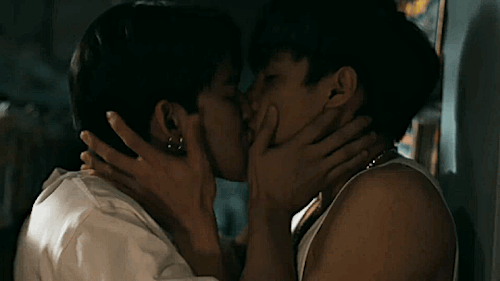
gif by @maxescheibechlinichacheli
I am so fascinated by Boston’s character, just thinking about the ways he does and does not fit in to the archetypes of a highly vulnerable tearoom participant: in his interest being in photography, capturing the images of queer men post-coitus, in the way he approaches Top at the urinal trying to entice him in to sex, in the ways he engages with and thinks of other people, and I am very much looking forward to seeing if this trend continues or diverges. For instance, will we see a drastically different side of Boston if we see more of how he interacts with professors in school considering that the one time that he was really quiet and reserved was during the presentation in front of the entire class? Will Boston fall in to the “public saint/private sinner” dynamic that would root him firmly in behaviors of a highly vulnerable queer man engaging in public sex? Or will he drift away from that alignment?
Disclaimer: I want to acknowledge that I am a Westerner and I am engaging and interpreting this show and the gay culture in this show through my own Western lens as well as the Western Gay Culture lens. However, I feel comfortable using these lenses to discuss, analyze, and identify threads of interest to follow throughout the show because:
In 1984, the ‘Boston Bar Study’ conducted by Men of All Colors Together Boston (MACTB) cited numerous examples of widespread discrimination at gay bars in Boston against black men. Similar types of discrimination have also been cited in Los Angeles and New York (Wat, 2002). Even more troubling is that this type of behavior seems to be international as well*anywhere that gay white men come into contact with gay men of color (Ridge, Hee & Minichiello, 1999). One can only imagine how many others never make it into the new stories. Rather than isolated events attributable to racist owners of single bars, the attempt to patrol the borders of whiteness in gay-owned business establishments seems to be a systematic practice (They Don’t Want to Cruise Your Type: Gay Men of Color and Racial Politics of Exclusion, Chong-suk Han, 2007).
In short, cruising, and discriminatory cruising practices are seen worldwide, and therefore I argue that gay culture in Thailand, while likely not identical, is similar enough to Western gay culture to apply similar frameworks, especially considering the aspects of gay culture Jojo and his co-creators have placed in their past works.
Sources
Ahlm, Jody (2017) Respectable promiscuity: Digital cruising in an era of queer liberalism, Sexualities, DOI: 10.1177/1363460716665783
Chong-suk Han (2007) They Don't Want To Cruise Your Type: Gay
Men of Color and the Racial Politics of Exclusion, Social Identities, 13:1, 51-67, DOI:
10.1080/13504630601163379
Humphreys, Laud (1970) Tearoom Trade.
Irvine, Janice M. (2022) Tearoom Trade: Tales of Public Sex, Marginal People in Deviant Places, https://www.jstor.org/stable/10.3998/mpub.11519906.11
Acknowledgements
I would like to thank @bengiyo, @lurkingshan, @neuroticbookworm, @so-much-yet-to-learn, @waitmyturtles for their thought partnership, edits, and suggestions!
#only friends#only friends the series#ofts#neo trai#jojo tichakorn#ninew pinya#boston#boston x nick#boston x top#neomark#forceneo#wka long post#kicking off the (possible- not guaranteed) WKA Academic Papers on Sex in Only Friends Essay series#only friends meta#only friends analysis#only friends the series meta#only friends the series analysis#ofts meta
375 notes
·
View notes
Text
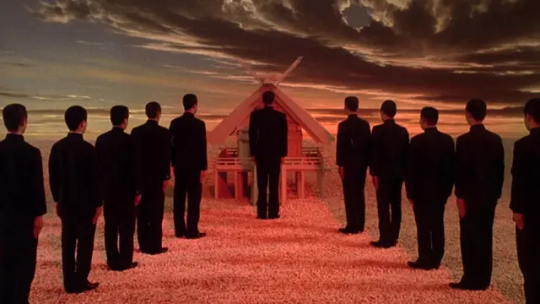
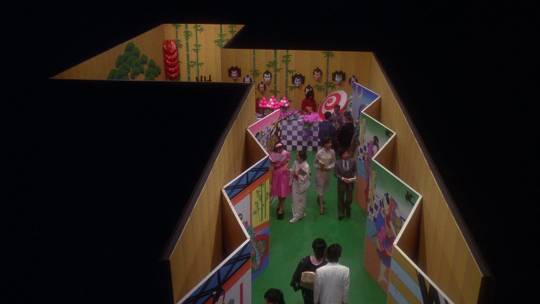

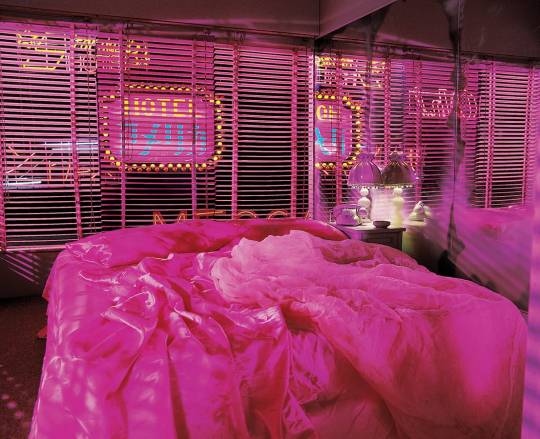
Yukio Mishima has been trending this week for uh, reasons. He was a world renowned Japanese author and all of his work is overshadowed by his actions on November 25, 1970. You might not want to read more about this guy because he is horrible and disgusting, but he's utterly fascinating and the movie about him is brilliant.
He's a really interesting character, to the point that he sounds fictional. He's gay, obsessed with ritualistic death, a right wing lunatic, led a private militia that was halfway to a cult, and also was a legitimately great author. His life is covered in the film Mishima: A Life in Four Chapters and it's easily the most beautiful film I've seen in my life. Look at the stills I posted above; every frame of this movie looks like that. It's all just a series of beautiful paintings with people living in them.
The way the film is structured is that it tells the story of his life in three ways. His past is told in black and white flashbacks with static cameras. This is closer to how a movie from the 50's would look like (specifically ones directed by Yasujirō Ozu). The events of three of his books are told with this beautifully stylized look, with sets that look like stage plays. The events of November 25, 1970 is told in an almost normal fashion, with regular colors and competent camerawork. The past is nostalgic, the present is mundane and only in fantasy can you truly come alive.
Through this movie we see the ideology of Mishima coming through. His nationalism, his sexual feelings and his thoughts on beauty and death all come together. Death isn't just a violent and tragic end, it is in itself a beautiful act. Beauty is the only true goal of life and creating beauty brings honor. Growing old and ugly is an act of hate; to die at your peak is to give love back to the world. It is therefore treasonous to live long enough to die peacefully. He pities what heaven must look like now; when men died young and beautiful it was paradise, but now it is filled with old men.
This is an objectively insane way to view the world but it is also fascinating. How much of this was what he believed, and how much of it was just begging for attention? In one instance when asked why he moved to the right politically he said "because the left was full". It was a joke answer, but he clearly wanted to be in the spotlight. His shield society was a paramilitary group dedicated to living a virtuous life of beauty, honor and old ideals. It was also a group of good looking, athletic young men led by a (barely) closeted, conservative gay man. So much of his life could have gone differently but also he was pretty much in control the whole time; he was independently wealthy and revered on the world stage. He could do whatever he wanted, and apparently the way his life went *is* what he wanted.
What's special about Mishima, both in the film and in real life, is that he's a smart and eloquent guy. In films the guy with a crazy worldview is someone like Travis Bickle from Taxi Driver or D-Fens from Falling Down. Travis couldn't understand the alienation and loneliness he felt and he couldn't find any healthy solutions. D-Fens was smart enough but not emotionally strong enough to confront his problems or deal with them maturely. These are people that could benefit greatly from therapy (other examples include Joker from Joker, Rupert Pupkin from the King of Comedy, Frank Murdoch from God Bless America, Patrick Bateman from American Psycho, Tyler Durden from Fight Club and so, so many more).
These are either 20 something year olds that are lost in the world, alienated and lonely, or 40 something year olds with a mid life crisis when they realize that everything has fallen apart. People who don't know where to go, or realize it's too late to change things. Travis Bickle had basically no friends, no family, no charisma with women and a lot of rage and anger. D-Fens lost his job, his self respect and was estranged from his ex-wife and daughter. These are people who's lives are shit at best (Patrick Bateman is a bit of a subversion. He is rich and successful, but his life is completely hollow, his relationships are shallow and he personally is very, very pathetic. I need to write about American Psycho later that film is great too.).
Mishima is different. He's smart enough to understand his issues and how to find help. He's got the money and means to do so. He's famous and rich enough that he could basically get away with anything weird or eccentric so long as it was harmless. On the world stage he was a popular author, and at home he led a life of political activism. If he was unhappy he could easily find healthy ways to fix it. His self destruction was the most avoidable of any of them, yet he's the only one that existed in real life. You expect these people to have serious personality flaws and unfixable (or seemingly unfixable) problems, not to be poetic writers that adhere to healthy living and regularly journal about their emotions, while enjoying respect from their peers and fulfillment in their work.
It's a hell of a film. Paul Schrader has not written or directed anything better (he actually wrote Taxi Driver too, so he had some experience with this type of character before) and it stands out as an incredible experience to watch. Like, Mishima's life is public knowledge and you can probably guess how it went, but I've purposefully not said what happened on November 25, 1970 because I don't want to spoil it. It's an event that actually happened but it's better for you to find out via the film than some wikipedia page.
#film#movie#cinema#paul schrader#yukio mishima#mishima: a life in four chapters#taxi driver#martin scorsese#patrick bateman#american psycho#travis bickle#rupert pupkin#the king of comedy#joker#joker (2019)#god bless america#Frank Murdoch#D-Fens#falling down#fight club#tyler durden#Yasujirō Ozu#japanese film#lgbtqia#lgbtq community#lgbtq
124 notes
·
View notes
Text

House is a music genre characterized by a repetitive four-on-the-floor beat and a typical tempo of 120 beats per minute as a re-emergence of 1970's disco. It was created by DJs and music producers from Chicago's underground club culture and evolved slowly in the early/mid 1980s, and as DJs began altering disco songs to give them a more mechanical beat. By early 1988, House became mainstream and supplanted the typical 80s music beat
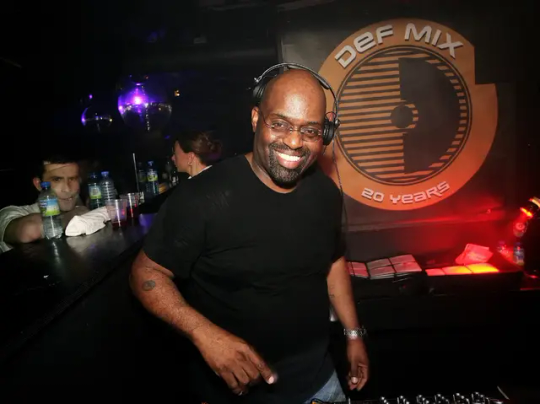
House was created and pioneered by DJs and producers in Chicago such as Frankie Knuckles, Ron Hardy, Jesse Saunders, Chip E., Joe Smooth, Steve "Silk" Hurley, Farley "Jackmaster" Funk, Marshall Jefferson, Phuture, and others. House music initially expanded internationally, to London, then to other American cities, such as New York City, and ultimately a worldwide phenomenon.
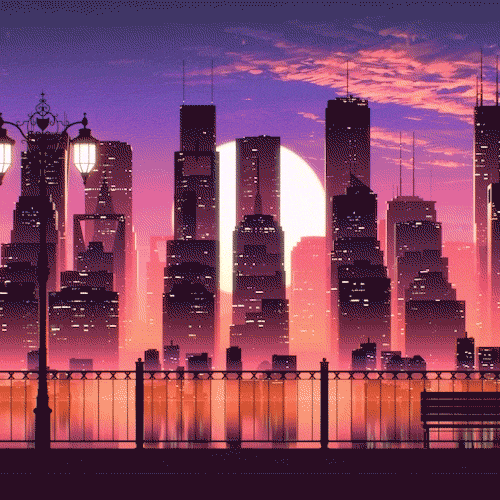
In its most typical form, the genre is characterized by repetitive 4/4rhythms including bass drums, off-beat hi-hats, snare drums, claps, and/or snaps at a tempo of between 120 and 130 beats per minute (bpm); synthesizerriffs; deep basslines; and often, but not necessarily, sung, spoken or sampled vocals. In house, the bass drum is usually sounded on beats one, two, three, and four, and the snare drum, claps, or other higher-pitched percussion on beats two and four. The drum beats in house music are almost always provided by an electronic drum machine, often a Roland TR-808, TR-909, or a TR-707. Claps, shakers, snare drum, or hi-hat sounds are used to add syncopation. One of the signature rhythm riffs, especially in early Chicago house, is built on the clave pattern. Congas and bongos may be added for an African sound, or metallic percussion for a Latin feel
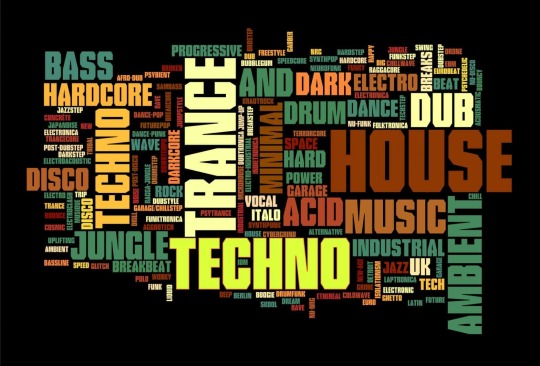
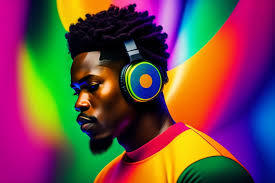
One book from 2009 states the name "house music" originated from a Chicago club called the Warehouse that was open from 1977 to 1982. Clubbers to the Warehouse were primarily African, gay men, who came to dance to music played by the club's resident DJ, Frankie Knuckles, who fans refer to as the "godfather of house". Frankie began the trend of splicing together different records when he found that the records he had were not long enough to satisfy his audience of dancers. After the Warehouse closed in 1983, eventually the crowds went to Knuckles' new club, The Power House, later to be called The Power Plant, and the club was renamed, yet again, into Music Box with Ron Hardy as the resident DJ. The 1986 documentary, "House Music in Chicago", by filmmaker, Phil Ranstrom, captured opening night at The Power House, and stands as the only film or video to capture a young Frankie Knuckles in this early era, right after his departure from The Warehouse.
In the Channel 4 documentary Pump Up the Volume, Knuckles remarks that the first time he heard the term "house music" was upon seeing "we play house music" on a sign in the window of a bar on Chicago's South Side. One of the people in the car joked, "you know that's the kind of music you play down at the Warehouse!" In self-published statements, South-Side Chicago DJ Leonard "Remix" Rroy claimed he put such a sign in a tavern window because it was where he played music that one might find in one's home; in his case, it referred to his mother's soul and disco records, which he worked into his sets

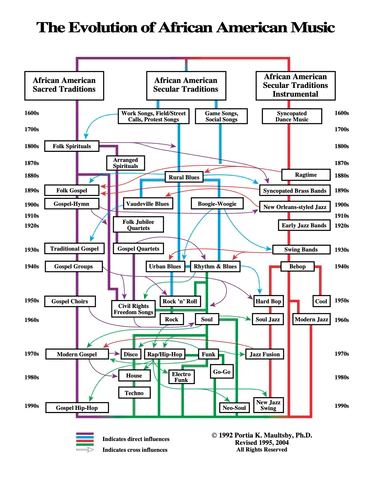
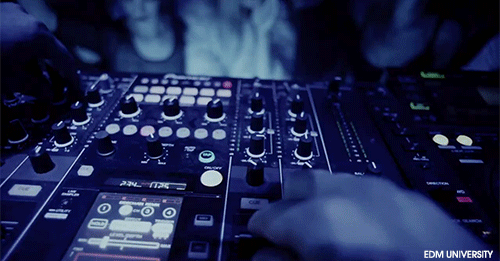
#house music#african music#chicago#african#afrakan#kemetic dreams#brownskin#africans#brown skin#afrakans#african culture#frankie knuckles#Farley “Jackmaster” Funk#dance#evolution of african american music
98 notes
·
View notes
Text
I think a lot of young queers folks (like me. Not trying to be all elderly about this I'm literally a gen z) today need to watch the good oldies about our community.
⚠️: I don't mean, in any way shape or form to insult the newer queer shows/movies. I love SPOP. I love TOH. I read and loved Heart stopper. However, because of the restraint of mainstream media, they have a very... palatable?? way to portray the community. I am NOT blaming the creators (who I'm sure would love to go a bit further down on their portrayals if given the option)
SO! I have nice recommendations that I, personally, enjoy a lot. They're in no particular order.
A classic, for starters. But I'm a cheerleader!: Very campy, barbie-y, funny and free on YouTube. A cheerleader is sent to a conversation camp when her social circle realizes that she might be into girls. (It has a very unrealistic portrayal of conversation camps, though. Very cartoony) my comfort movie fr fr
Priscilla, queen of the desert: A trio of drag queens travel across the desert on a big, old bus. They fight, there's some falling in love. They talk a lot about gender identity, queer childhoods and similar topics. I've only been able to find this one (and most of the ones on this list, since I don't have any streaming devices) on illegal websites. There's very, very direct homophobia, SA, physical abuse, child neglect, yk, the American dream. The queens are the funnier thing ever, the romance plotlines are absolutely delightful and well-rounded. Focuses a bit more on the community itself and interpersonal relationships. All around, a solid 10/10.
Kinky boots: A very prude, engaged man inherits a shoe fabric. He's running out of ideas to stay in business, until he meets a drag queen. Same warnings (and themes!) as the last one. This one has a stronger focus on how the characters become more accepting and how our queen navigates being faced with them. I've rewatched it like a hundred times.
The birdcage (2000's) or le cauge aux folles (1970'): A gay couple runs a drag club. Their son brings home a conservative girlfriend and her family. This is more comedy lenient, but funny as fuck nonetheless.
Paris is burning: this one is a documentary, btw. Focuses on the life of drag queens in the 80's. Nothing I didn't already say on Priscilla tbh.
Saving face: A chinese-american girl that lives in a VERY conservatory and secluded community is trying (and failing) not to fall in love with a ballerina. At the same time, her mother (a widow, how scandalous!) gets mysteriously pregnant and gets kicked out of their family home. This one will hit close to home if you're from any ethnic, homophobic household. Cried a lot. Then cried some more. Happy ending, though!
D.E.B.S: THIS IS THE FUNNIEST, CUTEST MOVIE EVER. It's a full on romance comedy for when the mind is a bit too tired! The main plot is that, in a school of girls being trained to be top-notch spies (very totally spies type) a girl who's the top of her class falls in love with the biggest villainess they ever faced. More of a coming of age thing, that also explores the good old dilemma of choosing what the hell you're supposed to do with your life once you turn 18 (relatable tbh)
And now, for a book (in Spanish, though) we have "Las Malas": Narrated by a trans, poor prostitute. Extremely realistic in its narrative voice, cruel and very hurtful sometimes. This is actually one of my favorite books ever, it's so fucking underrated that I'm going to die if no one reads it. There's EVERYTHING. It genuinely drives me crazy to read this. We have queer moms, a child found in a freezing park, suicides, literally anything happens. I love it.
If anyone has any suggestions PLEASE drop them. I'm begging u
#lgbt#but i'm a cheerleader#priscilla queen of the desert#kinky boots#the birdcage#movies#movie recommendations#idk#paris is burning#queer#lgbt movies
33 notes
·
View notes
Text
I have an idea for a very intentionally campy and over the top little IT au: 1970's rollerdisco au.
It's like the late 70's and the losers club (minus Eddie) are these spandex wearing glittery gay teenagers that fucking LOVE rollerdisco so much it's like all they ever do. Mike's parents own the whole disco, Richie's obssessed with their arcade games, Ben, Bill, and Bev are poly and constantly go on dates here, and stan has a part time job there, so they basically spen all their time here. Then they meet Eddie who's this total square loser who they can immediately tell is a square loser because he wears baggy brown sweaters and jeans to a skate rink. The losers take a real liking to Eddie and give him a glittery 1970's disco makeover that makes him look utterly ridiculous totally cool and hip! Then they find out he's actually a master at roller disco despite never even putting on skates before in his entire life, but they gotta keep it a secret cause his mom is gonna lose her shit if she finds out about it. To sonia, Rollerdisco is as bad as, if not worse than, herion and gang violence.
Then there's a stupid rollerdisco contest and the losers gotta go against their arch rivals, Henry, Belch, Vic, Patrick, Connor, and Greta to win it. Don't worry though, they also look totally ridiculous in their rollerdisco clothes. Henry specifically wears a hot pink jacket, hot pink sweat band, hot pink spandex suit, and knee high socks to skate. You know it's bad when the most ridiculous aspect of Henry's appearance ISN'T his mullet. All of the losers hate him because he's the undefeated champion and won't shut the fuck up about it. Eddie is so good he might be able to take home the gold and wipe that smug ass smile off his face.
Nothing in this au is supposed to be taken seriously, everything is unbelievably lame but treated like it's the coolest thing ever. Sonia is out here telling Eddie the only place he's gonna be roller skating in his hell because he put on glittery eye shadow. Greta's reaction to seeing Eddie's moves is "Look how funky he is! We can never beat that!", Bev has her hair so crimped it looks like it exploded, nobody seems aware that disco is gonna die in like five years, despite the fact there are no drugs in this disco everyone acts like they're on ecstacy, Butch is putting unbearable pressure on Henry to win like this is some kind of extreme sport, and the losers and Henry's smack talk is just cringe through and through. Even though this au is satirical these kids aren't doing this stuff with any hint of irony, they fully believe this roller skating is the greatest and most important thing in the universe. I think it would be funny if Henry still tried to murder all of them in this au, and it eventually devolves into some fever dream slasher.
I kind of picture everyone in this au just dressing like this all the time:

#it 2017#it chapter 1#it chapter 2#gay clown movie#it stephen king#it 2019#henry bowers#bowers gang#the bowers gang#eddie kaspbrak#richie tozier#beverly marsh#it au#bill denbrough#belch huggins#victor criss#vic criss#regginald huggins#greta keene#connor bowers#patrick hockstetter#ben hanscom#stan uris#stanley uris#mike hanlon#the losers club#losers club#lucky 7
20 notes
·
View notes
Text
Happy Pride
I want to wish a happy Pride to:
Vests
The vest is an iconic lesbian wardrobe staple. For a long time, lesbian fashion has incorporated staples of working-class men's clothing because they are practical and unpolished, which is not typical of women's fashions, and therefore it challenges gender norms. Vests can be formal or casual, they are familiar yet subversive when worn by women, thus making them a lesbian standard.
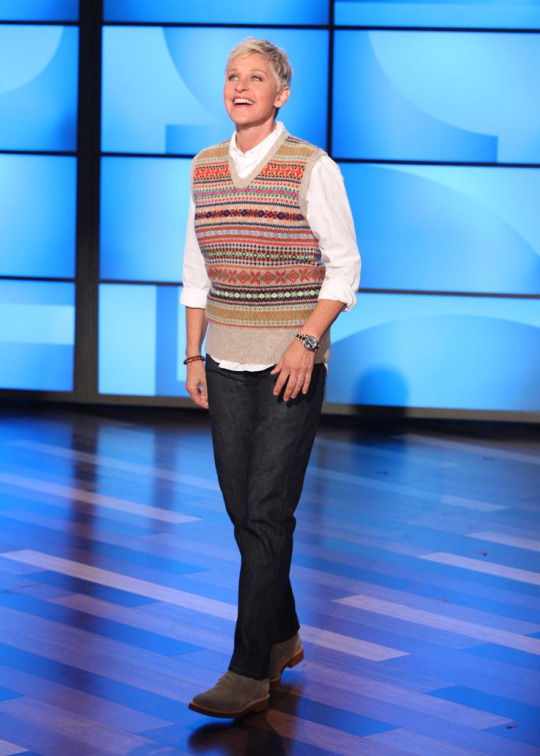
Frog and Toad
These cottagecore gays are good role models of a loving queer relationship. The first Frog and Toad book was published in 1970. In 1974, the author Arnold Lobel came out as gay to his family. Arnold's daughter has said, “I think ‘Frog and Toad’ really was the beginning of him coming out” because they're “of the same sex and they love each other.” So yes, Frog & Toad are a gay couple.
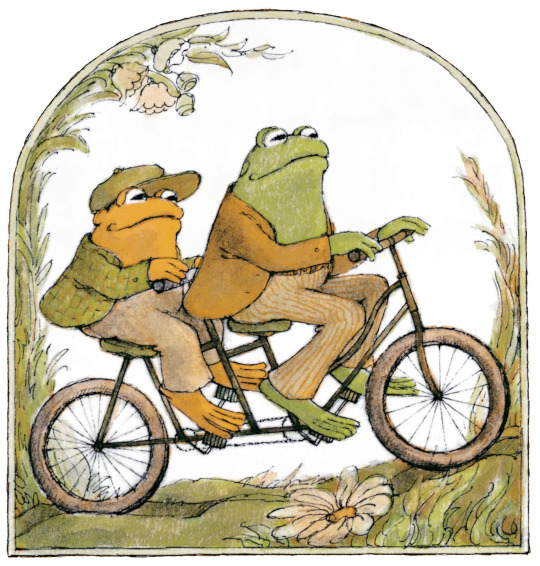
Cake
In the 1990's and early 2000's, a popular dessert was the Better Than Sex Cake, which was a rich chocolate cake. Well, when you're asexual, the name of that cake hits a little different. In 2004, asexuality.org (AVEN) started using cake as a symbol of asexualness since they believe cake IS better than sex. Asexuals may not have much of an appetite for sex, but that does not mean they have no appetites, thus the popular phrase "I'd rather have cake."
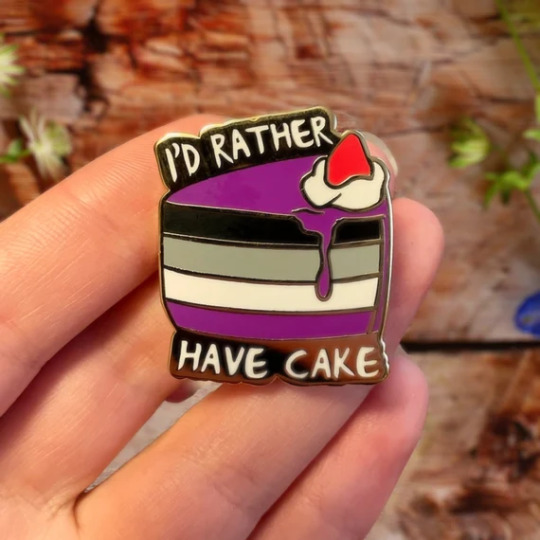
Limp Wrists
Why do we associate a limp wrist with male homosexuality? The ancient Romans viewed limp wrists as effeminate, and the association was further strengthened in the 17th & 18th centuries as one hand with a limp wrist and the other hand placed on the hip in an "I'm a Little Teapot" pose was seen as something men in the royal courts would do, and that sort of leisurely life was considered unmanly. In the modern era queer men have been seen as effeminate, so the limp wrist became associated with them. This association was embraced and reclaimed by queer men, and the wider queer community as a whole.
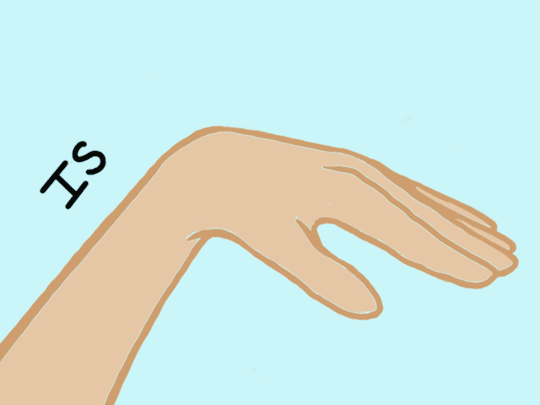
Unicorns
Unicorns have been used in art since the 4th century BCE and it was the Victorians who firmly linked unicorns with rainbows. In 1978, Gilbert Baker created the rainbow flag as a joyous symbol of the queer community. Given that rainbows and unicorns are so intrinsically linked, it’s unsurprising that the mythical creature started to also be used as a symbol for LGBTQ+ people.

Pansies
“Daisy,” “buttercup,” and especially “pansy,” are flowers which have been used to mean a “flamboyant gay man.” Sometimes the word "pansy" has been positive, sometimes definitely not. In the 1920's & 1930's, the underground clubs of the Prohibition era became a hotspot for queer nightlife with drag queens becoming hugely popular entertainment even among the straight clientelle, and this became known as the "Pansy Craze" in reference to the colorful clothing the performers wore. In 2013, because of the association the pansy has to queer people, a group of people in Atlanta used them to block out hatred by putting cardboard pansies on poles tall enough to block the protesters’ signs, and voila, the Pansy Patrol was born.

Queer Sitting
Improperly sitting is one of many seemingly arbitrary traits (like walking fast and being unable to drive) that the online queer community has claimed as part of queer culture, but it's deeper than it seems. Girls are often taught to sit like a lady, such as keeping their knees pressed together, therefore an act of rebellion can be a woman sitting incorrectly. By not sitting properly, it's a rejection of rules about what we can do with our bodies. In movies & television, for decades censorship codes worked to silence queer voices, and creators developed sophisticated ways of coding queerness through body language, such as the way a character sits. Queer sitting resists the process of assimilation and instead says: do what feels right, do with your body what you would like, not what you are told is proper.
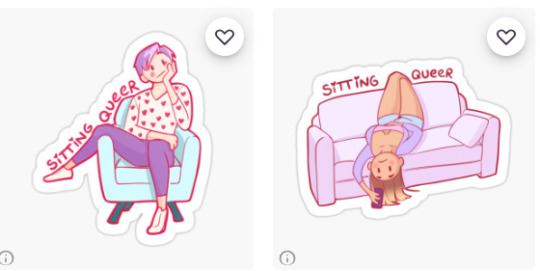
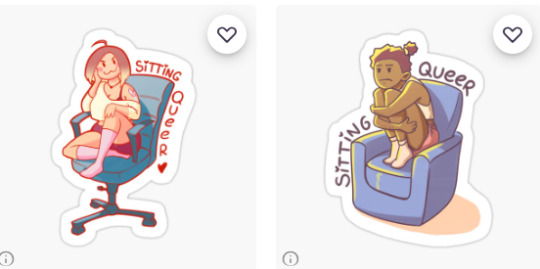
RuPaul's Drag Race
Many of us in the queer community take RuPaul's Drag Race for granted with its 15+ seasons, multiple Emmy wins, spin-offs like All Stars & Secret Celebrity, 15 different international versions, a successful Las Vegas show, and the many memes and catchphrases that have come from the show. It’s easy to forget in the 2000's things were very different. There were gay characters on TV and reality shows like Survivor had openly gay contestants, but until RuPaul’s Drag Race premiered in 2009 there wasn’t a truly successful series made by queer creators, starring queer cast members, and made specifically for a queer audience.
RuPaul's Drag Race brought drag performance to a large audience and presents topics traditionally considered taboo on television, such as that it's okay to not conform to societal expectations around gender and sexuality. The show has spread awareness and acceptance as it provides positive representation of queer people and humanizes us as it showcases the struggles of gay, lesbian, gender-nonconforming and transgender people and as the contestants tell stories of coming out, being affected by HIV/AIDS, being rejected by their families and attacked in the streets.
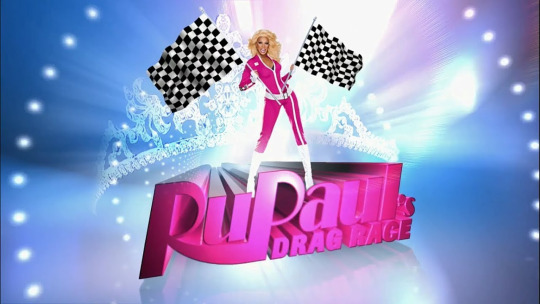
Quiche
in Anglo-American culture, French cuisine is not viewed as "manly" food, which is the first mark against quiche. During the 1970s, quiche was served at brunch spots frequented by gay men which led to it being seen as a quintessentially queer dish, another mark against this food. Quiche became seen as so effeminate that a 1982 best-selling book satirizing masculine stereotypes was titled Real Men Don't Eat Quiche. Instead of the French name "quiche," if it had been called "scrambled egg pie" it likely wouldn't be considered a food for women and the gays, which just goes to show how lame it is to think of food as gendered in some way, but as long as they keep serving it for brunch, we'll keep eating it

Tumblr
Tumblr is known as "queerest place on the internet" and as a platform that "queer[ed] an entire generation." According to Tumblr, the people who use its site are 193% more likely to be LGBTQ compared to those on TikTok, Facebook, Instagram, Snapchat, Reddit, Twitter, and Pinterest. Tumblr estimates that 1 in 4 of its users identifies as LGBTQ. An important reason for this is that Tumblr does not require identity cues to be featured, such age, gender, location, relationship status or legal name, which allows users control over their self-presentation and makes it far less likely family and friends may discover their Tumblr account. This privacy allows queer people on Tumblr to feel more comfortable exploring and expressing their queerness.
Tumblr has been a place of important contributions to queer culture. One example is the large number of queer Pride flags which were first introduced and adopted on Tumblr:
In 2010 Jasper V. introduced his design for a Pansexual flag on Tumblr.
The Polysexual flag was created in 2012 by a Tumblr user named Tomlin.
The Genderfluid flag was created by agender Tumblr user JJ Poole in 2014.
The Agender pride flag was designed by Salem X in 2014 on Tumblr.
The Aromantic flag was created and posted by Tumblr user cameronwhimsy in 2014.
The omnisexual flag was designed in 2015 by Tumbler user pastelmemer.
Tumblr user 2Sanon posted a 2 Spirit flag in 2016.
In 2018 a nonbinary lesbian Tumblr blogger named Emily Gwen introduced the Sunset Lesbian flag to be inclusive of butch, trans, and enby lesbians.

38 notes
·
View notes
Text
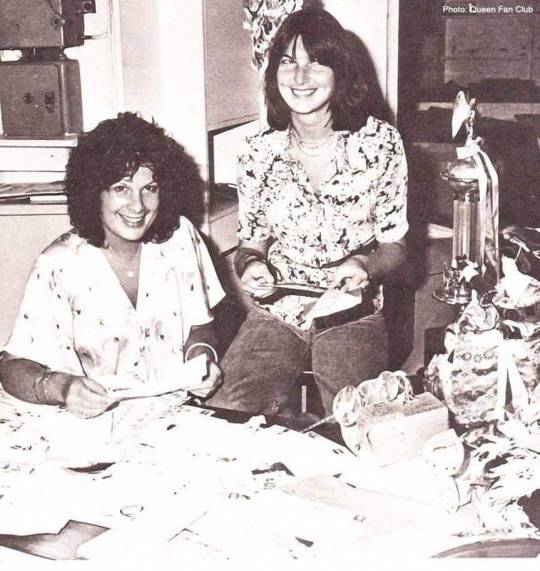
February 1974 - 50 years ago in 1974 that Queen launched the Fan Club!
👉 The Official International Queen Fan Club!!
🔸The Official International Queen Fan Club founded by sisters, Pat and Sue Johnstone (in the picture), Pat passed away in january 2018.
The two sisters were Roger Taylor's friend since their teenage years in Truro, UK, 1970.
🔸This club is mentioned in the Guinness book of World Records as the "longest running fan club for a band".
🔸🔸What must it be like to brag that you were at rock gods Queen’s first ever performance? Well, quite a few people in Cornwall can, because on this very date – June 27 – in 1970 popular rockers-on-the-rise Smile played their first gig with a new line-up and a new name, Queen, at Truro City Hall, which later became the Hall For Cornwall.
Truro boy Roger Taylor told Cornwall Live: “That was actually arranged by my mother in aid of the Red Cross. We were paid £50, which was quite a lot of money back then. I’m not sure many people turned up though.”
Roger’s mum Win had placed two adverts in The West Briton newspaper on the run-up to the gig, still in the name of Smile. However, the band had already decided to play under the new name Queen – eyebrow-raising for the time.
She recalled Freddie explaining the new name at her Truro bungalow: "He just kept saying how regal it sounded.”
Sue Johnstone, a friend of the band from Truro, remembered: “We would hitch a lift back to Cornwall from the start of the M4, and on one of these occasions Freddie walked us to the bus stop and said ‘what do you think of the name Queen?’
"We thought it was hilarious because he was always so camp. And we just laughed and thought of the gay connotation immediately, but he tried to make it more acceptable by persuading us that it was ‘regal’.”
Read on ↘
https://www.cornwalllive.com/whats-on/music-nightlife/queen-played-first-concert-cornwall-1720494.amp
📸 Photo: Queen Fan Club
#queen fan club#fan club#1974#queen#brian may#john deacon#freddiebulsara#legend#roger taylor#london#zanzibar#queen band#freddie mercury#cornwa
54 notes
·
View notes
Note
I'll preface this with saying that if you don't feel like dealing with this topic then feel free to delete the ask.
So I have a question regarding the "kink at Pride" debate. Isn't the most viable solution just having two events; i.e. one venue hosts an "all-ages" type and another separate one where everything is allowed?
I ask this because I recognize the contributions that people with kinks have made and I don't agree with the exclusionist mindset, but I'm one of those people who does have trauma surrounding kink. I hate feeling excluded because of that (after all, I'm queer and I've struggled just as much as the next queer person) and I want people like me to be able to participate just as much as those who helped make history. There are those who are able to reconcile their trauma, but many of us can't.
I'm sorry if this is a stupid question. People on both sides tend to be very hostile regarding this subject... and that said I genuinely do understand the anger felt on the side of people with kinks since the talking point "kink doesn't belong at Pride at all" is an ahistorical and TERF based mindset. I just wished that the discussion around this topic was less toxic because I don't want to be exclusive to others nor be excluded myself, and unless I'm missing something it seems like the solution that would be beneficial for everyone is having those two spaces that accommodate both camps (if it is a common thing then that's good, but I've been to several areas and every event was only ever the mixed bag for lack of a better term).
hello there, i think my best answer for this question is this
it's totally okay to want to have all ages events and sections and aspects to pride parades and pride events- in my city pride lasts for an entire week and there are events specifically for kids, and elderly queer folks as well. often times during pride month there will be all kinds of celebrations and i think it's a good idea to have multiple kinds of celebrations
however, you really cannot remove the adult aspects from pride parades and other big main event pride festivals- there is free AIDS testing at a lot of pride fests, free condoms and dental dams, sexual education, other sex harm reduction education and resources, sex toy shops, info on safe gay/trans sex, information on safe kink practices, etc. removing those aspects of pride could be downright dangerous for some who rely on this type of harm reduction
i understand that you have trauma and that you want to express boundaries, that is good- if witnessing kink upsets or triggers you, it's okay to want to avoid it, but pride is going to have displays like that because it is in fact a protest. it is not family friendly, it never has been and it never will be- it spawned in response to police brutality that was happening within queer bars. it is designed to shock you and make you think.
pride is an event that has historically been kinky and included a lot of people proudly displaying that they live alternative lifestyles because they are heavily important to a lot of queers. the san fransisco pride parade is lead by the lesbian leather motorcycle club, Dykes on Bikes, and has been since the late 1970's.
i think it's very odd to focus on kink in specific when there are other traumatizing things that come up at pride- people discuss abortion, abuse, being arrested, beaten by the police, being denied rights adoptive rights and healthcare, and so much more. pride will always have something that will make people uncomfortable, because it is a protest in the street to talk about the brutal reality of our lives
again, as i stated, i am fine with children's, all ages, etc. pride themed events being held but main pride parades, festivals, etc. are in fact designed to be protests, meaning provocative and brutally real. they're not just for waving rainbow flags and saying "yay we love being gay!" it's okay to know your own limits and boundaries but i think that if you know that that's upsetting to you, you may just not be suited for an inherently political event, and that's okay. hope that helps, take care, stay safe
183 notes
·
View notes
Text
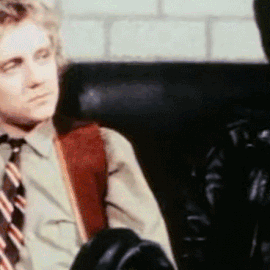

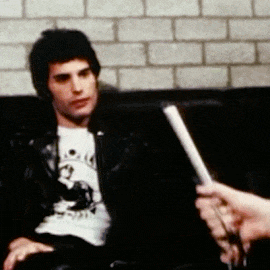






Freddie Mercury wearing a t-shirt from Die Knolle, a gay Leather club that opened in Berlin in the mid-1970s
#freddie mercury#freddiemercurygifs#freddiemercuryedit#queen band#queen#queenband#queenbandedit#queenbandgifs#myedit#freddie#freddiewearingleather
174 notes
·
View notes
Text


After a five-year stint in prison for a crime he didn't commit, twenty-six year old Al Segreto is a free man—sort of.
In truth, he's less free now, at the mercies of his meddling family and under the close supervision of his uncle, the eccentric Don of the Segreto Crime Family, than he was in prison, where—if nothing else—he was free to nurse his festering doubts about the family business in the relative quiet of a dimly-lit cell block.
Now that he's back on the mean streets of 1970s Philadelphia, though, Al is forced to take his rightful place as a made man of the Segreto Family, and that means taking control of the family's lucrative vice racket, operating strip clubs, brothels, gay bars, and blackmail schemes across the city: an assignment complicated by Al's burgeoning doubts about his own sexuality, which could prove deadly in the staunchly homophobic culture of the Italian mob.
When a blackmail scheme against a meddlesome politician forces Al to grow closer to flamboyant drag performer Will, a bartender at one of the city's most infamous gay nightclubs, all of his doubts and fears are brought dangerously close to the surface, forcing Al to ask a question that may very well get both of them killed—how, exactly, does a person find their place in the world, and just how far is he willing to go to keep it?


GENRE: historical fiction · crime · romance THEMES: masculinity · violence · generational trauma · the politics of space · homophobia · power · what we owe our families · what we owe ourselves CONTENT WARNINGS: period typical homophobia · sexual assault mention · police brutality · graphic violence · death

82 notes
·
View notes